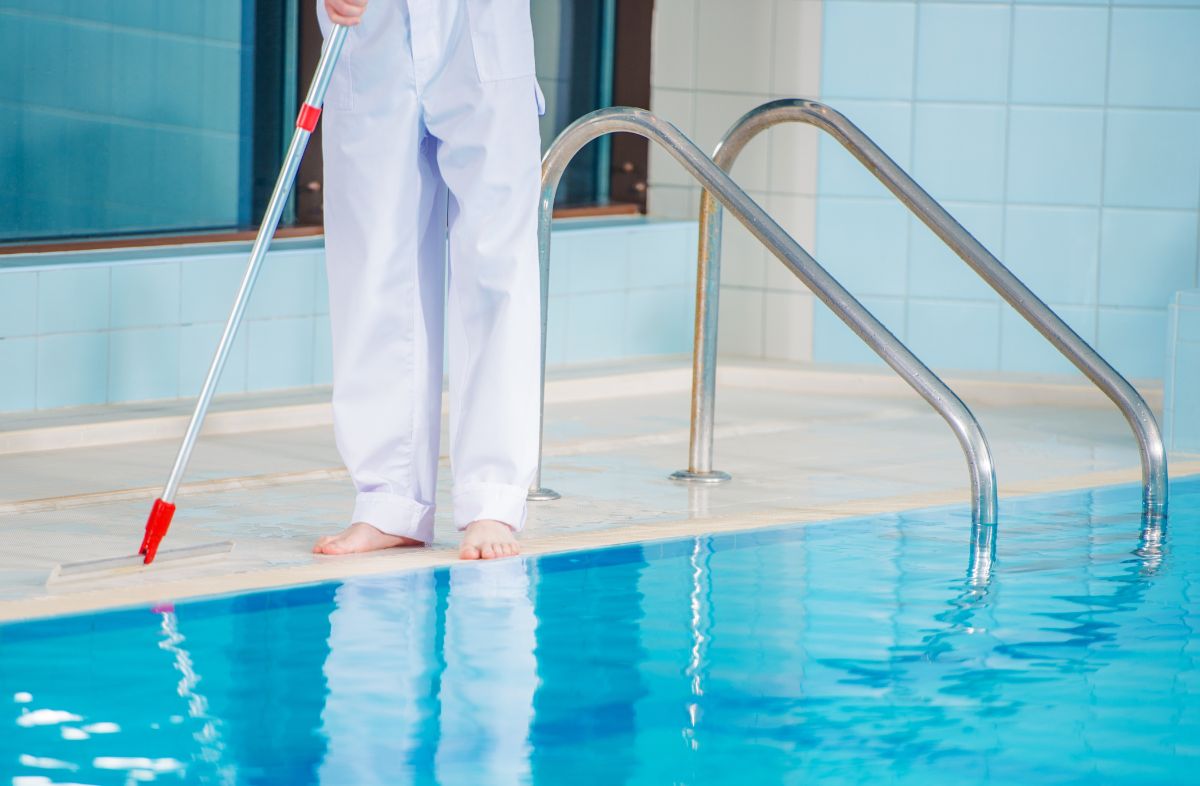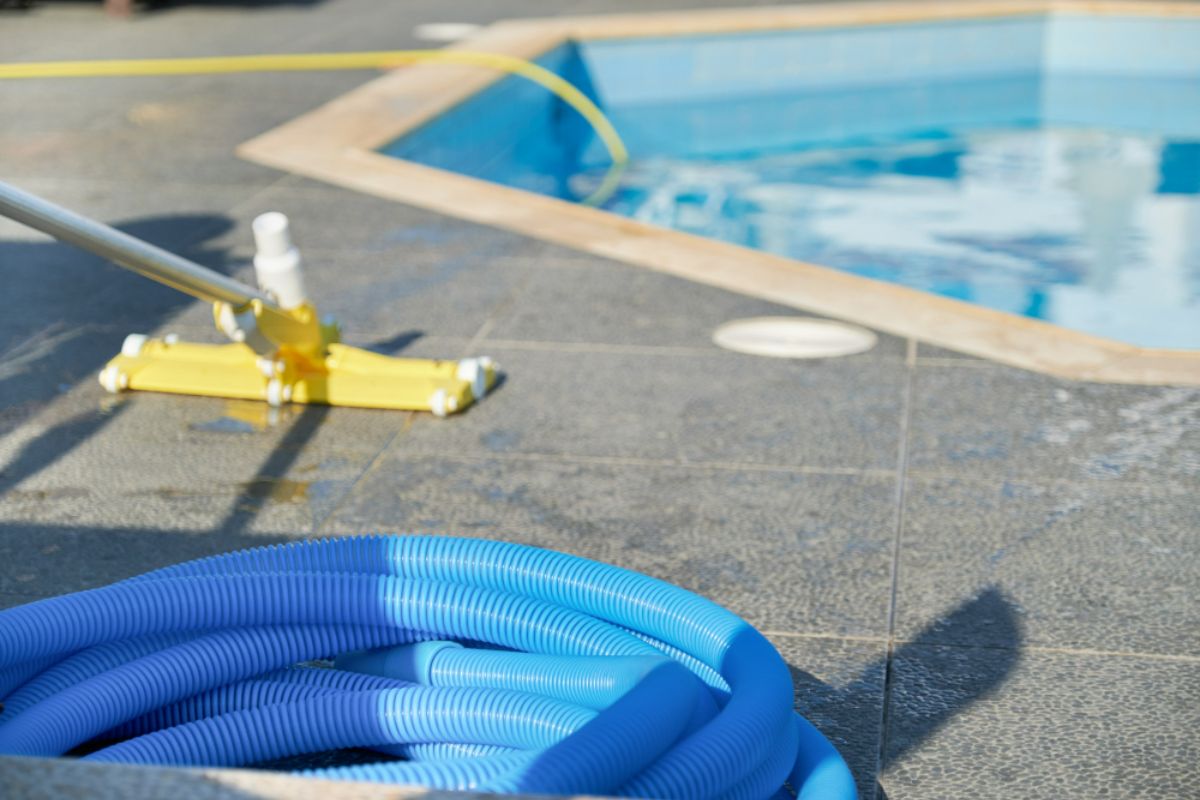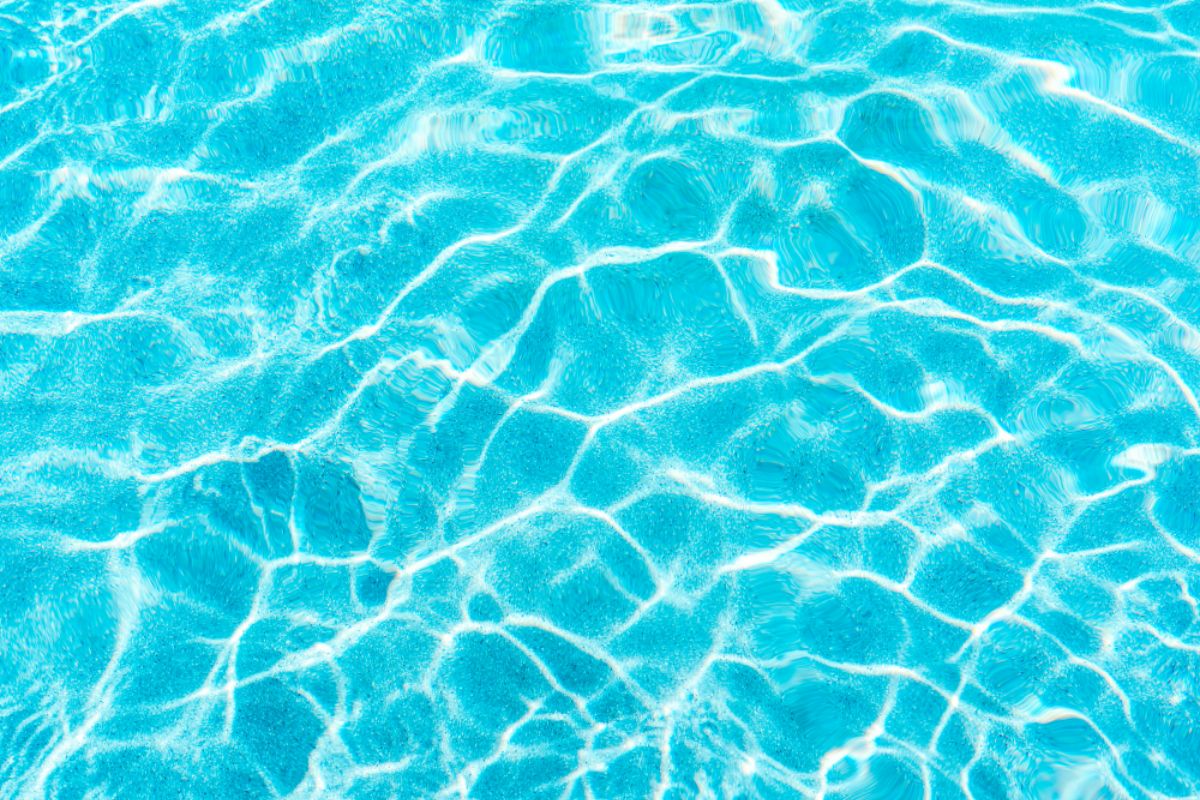How to reduce chlorine levels:
-
- Expose water to sunlight
- Drain water and refill the pool or spa
- Use chlorine neutralizers
We all know that chlorine sanitizes your pool and spa water. So, it stands to reason that more chlorine equals cleaner water, right?
Not exactly. There’s a happy medium to be had when adding chlorine to your water — too much, and you’d have a problem on your hands. So, if you’ve accidentally over-chlorinated your pool or spa, and need a quick fix, you’ve come to the right place.
We’ve put together an easy-to-follow guide on how to identify this problem, and how to reduce chlorine levels. Read on!
What causes high chlorine levels?
There are a few ways that this could happen to your pool or spa.
The first is you might have simply added too much chlorine to your pool. This can happen if you’ve miscalculated, or if you used stronger chlorine products like pool shock.
The second is adding too much chlorine after using a chlorine stabilizer, such as our cyanuric acid. This is a common mistake, as people often forget to account for the fact that cyanuric acid slows the process of the sun breaking down your chlorine.
The third reason is your chlorine is unaffected by the sun — either from the water being covered or shaded. So, your chlorine levels stay higher than usual.
How do I tell if my water has too much chlorine?
The easiest and most accurate way of telling when your water has too much chlorine is by using our HCT Pool & Spa 5 in 1 Test Strips. When you test your water with this, you can find out how much chlorine is active in your water — also known as free chlorine. If the test shows that your free chlorine levels are above the ideal range (1 to 3 ppm), then you’re dealing with over-chlorinated water.
But what about if you notice a “chlorine smell” around your pool or spa? This doesn’t indicate that you’ve used too much chlorine. The smell comes from the free chlorine reacting with contaminants and indicates that your chlorine is being used up.
And what about your eyes feeling irritated after a swim? This isn’t caused by high chlorine levels either. Rather, it’s the result of improper pH levels. Your pH levels should be between 7.4 and 7.6. Anything aside from that can cause eye irritation.
Is it safe to swim even if there is too much chlorine?
No, you shouldn’t. Swimming in over-chlorinated water can cause irritation and sickness. The chlorine can affect your lungs, skin, and eyes. It can also trigger asthma attacks. You should tackle this problem first before taking a dip in your pool or spa.
How to reduce chlorine levels:
If you’ve found that your chlorine levels are too high, don’t worry. There are a few simple ways to lower your chlorine levels and make your water safe to enjoy again.
Stop adding chlorine
This is the simplest thing you can do. If you’re using a chlorinator, chlorine feeder, or salt water chlorine generator, turn them off. If you’ve left chlorine tablets in your skimmer, remove them.
Then, let your water jets run for a few hours. This should help reduce the chlorine levels and is especially effective if your chlorine levels are only slightly above the ideal range.
Expose water to sunlight
If you use a pool or spa cover, then remove it. Exposing your water to sunlight is another simple yet effective way of reducing chlorine levels.
This is because sunlight is known to decrease chlorine content in water in relatively short periods. Just a few hours of direct sunlight will lower your chlorine levels by up to 90%.
However, if you’re using cyanuric acid, this method will not be as effective.
Drain water and refill the pool or spa
Another method is by diluting the water in your pool or spa. This is something you can do if time is not a problem.
If you use this method, you’ll also have to readjust the pH levels, alkalinity, and other parts of your water chemistry again. Keep in mind that this can take a lot of time and effort on your part.
Drain and replace about ⅓ to ½ of the water. Don’t drain your entire pool or spa. Test the chemical levels after the pool or spa is refilled. Measure the appropriate amount of chlorine, and add. You can check our guide here if you need tips for adding chlorine.
Let your water circulate for a few hours before testing again and checking if you’ve hit the ideal range of 1 to 3 ppm.
Use chlorine neutralizers
The last option available to you is using chlorine neutralizers. One product you can use is pool-grade hydrogen peroxide. Just be sure to test your pH before using it, as it works best at pH levels of 7.0 or higher. Using this product can also lower your pH levels, so be sure to re-test your water and adjust your pH levels afterward.
Another chlorine neutralizer you can try is sodium thiosulfate. While this is a quick way to fix your chlorine levels, this product is easy to overuse. And, using it will significantly lower your water’s pH. If you use this product, start by adding small amounts to your pool, and using your test kit to monitor the chlorine levels. Do this until you hit the range of 1 to 3 ppm. Be sure to re-test your water and adjust your pH levels afterward.
Key Takeaway
Chlorine is a must if you want your water to be clean and safe for everyone to enjoy. But, hitting the right chlorine levels can be tricky.
Luckily, it’s easy to fix when you accidentally overshoot the mark. Just use our guide on how to reduce chlorine levels to tackle the problem!
If you’re on the search for swimming pool chemicals, contact Oktakem — we carry all the supplies you need to maintain your pool, and can deliver them in bulk! Visit our website shop, official Shopee page, or official Lazada page to get all the swimming pool chemicals you need.











